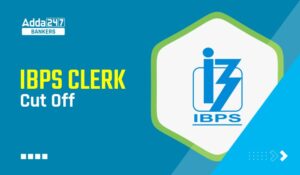Directions (1-2): Answer the questions based on the information given below:
Nikhil leaves his house to reach his office and moves 10m in north direction. From there he moves 15m west and stops at a park. From there he moves 12m to his right and stops at a bus stop. From there he moves 12m to his left and stops at a pet shop. From there he moves 6m in north direction. At last, he moves 22m in east direction to reach his office.
Q1. In which direction is his office with respect to his house?
(a) North-east
(b) South-east
(c) North-west
(d) South-west
(e) None of the above
Q2. In which direction is park with respect to his office?
(a) North-east
(b) South-east
(c) North-west
(d) South-west
(e) None of the above
Directions (3-5): Answer the questions based on the information given below:
Eight points are drawn on a sheet of paper such that U is 3m west of P which is 4m south of T. V is 7m east of S which is 2m south of W. R is 7m north of Q. T is 8m west of R. Q is 3m east of W.
Q3. What is the shortest distance between T and V?
(a) 13m
(b) 14m
(c) 15m
(d) 16m
(e) None of the above
Q4. In which direction is R with respect to S?
(a) North-east
(b) South-east
(c) North-west
(d) South-west
(e) None of the above
Q5. In which direction is T with respect to the point which is to the south- east of Q?
(a) North-east
(b) South-east
(c) North-west
(d) South-west
(e) None of the above
Directions (6-10): In the following questions, some statements and conclusions are given. Considering all the statements to be true, then decide the conclusions which logically follow. Study the data carefully and answer the questions accordingly.
Q6. Statements: Only Reasoning is English. Only a few Reasoning is Maths. Some Reasoning is Hindi
Conclusion:
I. Some Maths is English is a possibility
II. All Maths is Reasoning
(a) If only conclusion I follows
(b) If only conclusion II follows
(c) If either conclusion I or conclusion II follows
(d) If both conclusions I and II follow
(e) If neither conclusion I nor conclusion II follows
Q7. Statements: All Tablets are Capsules. Only a few Capsules are Syrups. No Syrups are Medicines.
Conclusions:
I. Some Syrups are Tablets
II. No Tablets are Syrups
(a) If only conclusion I follows
(b) If only conclusion II follows
(c) If either conclusion I or conclusion II follows
(d) If both conclusions I and II follow
(e) If neither conclusion I nor conclusion II follows
Q8. Statements: Some Paper is Sheet. No paper is Notebook. Only a few Notebooks are Books.
Conclusions:
I. All Notebook is Sheet is a possibility.
II. Some Books is Paper.
(a) If only conclusion I follows
(b) If only conclusion II follows
(c) If either conclusion I or conclusion II follows
(d) If both conclusions I and II follow
(e) If neither conclusion I nor conclusion II follows
Q9. Statements: Some Paper is Sheet. No paper is Notebook. Only a few Notebooks are Books.
Conclusions:
I. Some paper is book is a possibility
II. All sheets is papers
(a) If only conclusion I follows
(b) If only conclusion II follows
(c) If either conclusion I or conclusion II follows
(d) If both conclusions I and II follow
(e) If neither conclusion I nor conclusion II follows
Q10. Statements: No Wheat is Pulses. All Pulses are Spices. Only a few Spices are Organic.
Conclusions:
I. Some Wheat is Spices.
II. No spices are Wheat.
(a) If only conclusion I follows
(b) If only conclusion II follows
(c) If either conclusion I or conclusion II follows
(d) If both conclusions I and II follow
(e) If neither conclusion I nor conclusion II follows
Directions (11-15): Study the following information carefully and answer the given questions.
Ten people i.e., Q, R, S, T, U, V, W, X, Y and Z were born on two different dates i.e., 12th and 19th of February, May, July, September and December of the same year but not necessarily in the same order. S was born on an even-numbered date in the month having 31 days after May. Four people were born between T and Z. V was born on the same date of Z but not in May. Q was born just before Y. The number of people born after S is the same as the number of people born before T. The number of people born between V and Y is the same as the number of people born between V and X. Two people were born between S and Y who was not born in February. R was born in the month having the least number of days. U was just before S.
Q11. How many people were born between W and Y?
(a) Four
(b) Three
(c) Five
(d) Two
(e) None of these
Q12. V was born on which of the following date?
(a) 19th December
(b) 12th December
(c) 12th July
(d) 12th September
(e) None of these
Q13. How many people were born after U?
(a) Five
(b) Four
(c) Six
(d) Seven
(e) None of these
Q14. Who amongst the following was born just after S?
(a) W
(b) V
(c) T
(d) X
(e) None of these
Q15. Four of the following five are alike in a certain way and hence form a group. Who among the following that doesn’t belong to that group?
(a) Z
(b) S
(c) W
(d) Y
(e) Q
Solutions






 GA Capsule for SBI Clerk Mains 2025, Dow...
GA Capsule for SBI Clerk Mains 2025, Dow...
 The Hindu Review October 2022: Download ...
The Hindu Review October 2022: Download ...
 IBPS Clerk Mains Cut Off 2025, Check Sta...
IBPS Clerk Mains Cut Off 2025, Check Sta...







